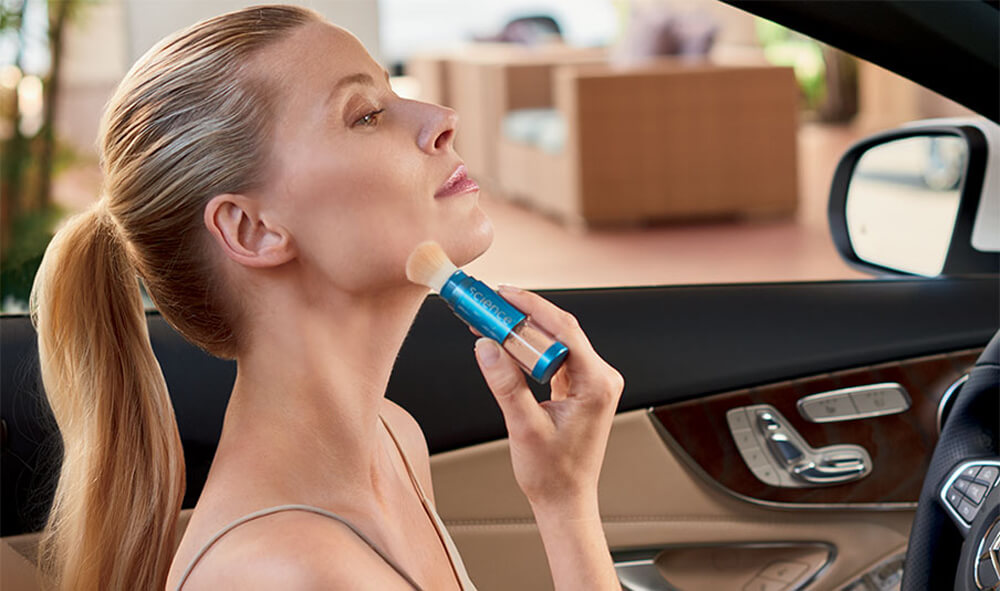Your skin needs protection from the sun—no brainer. Dermatologists agree that sunscreen is an absolute necessity. I mean hey, it’s been around for nearly 100 years! But lately there are a few new players at the sun-protection table. Let’s take look at powdered sunscreens and whether they might be more suited for you than traditional creams or sprays.
Colorescience Sunforgettable SPF 50 Brush
Colorescience Sunforgettable SPF 50 Brush Mineral Powder Sunscreen is an impressive contender in the powder sunscreen world. This product is a light mineral sunscreen which blocks rays while helping to prevent further inflammation. The lightly tinted formula has green undertones to actively neutralize redness while keeping your skin safe from the sun. It is also water resistant for 80 minutes—ideal for swimmers, surfers, or avid sports players.
Powdered sunscreen might sound newfangled, but when we look at the active ingredients that go into it, we can see that they already exist in powder form (i.e. titanium dioxide and zinc oxide). These ingredients can be made into a liquid cream or into spray form as a way of more effectively applying the sunscreen, but the protective ingredients don’t actually change.
Easy sunscreen applying by Sunforgettable Brush
People who see less than optimal results from powdered sunscreen might need to re-evaluate the amount of product being applied. Unlike lotion sunscreen where you can see the quantity you’re applying (and the specific places!) it can be tricky to know exactly where and how much powder is ending up where you want it to. Sprays are trickier than creams if you’re on your own—good luck reaching all the corners of your own back. But once you figure out the correct application, how does it stack up against more traditional sunscreens? Using the applicator brush to small circular strokes across your face and neck automatically releases the powder.

Easy sunscreen applying by Sunforgettable Brush
Does sunscreen cause breakouts?
Most of the insight into whether sunscreen causes breakouts is anecdotal. The research is limited because it’s tricky to pin down any perceived breakouts to one specific ingredient or combination of ingredients. Oiliness or sensitivities can play a part in personal adverse reactions. It also depends on what other skin products are being worn simultaneously. The recommended application process for skincare products is: prescription medications, sunscreen, foundation, and then whatever other colored cosmetics you choose.
Many people skip out on a higher SPF sunscreen when they’re wearing makeup that already contains ‘SPF coverage’ because they think they’re set. What many people don’t realize is that makeup will need to be applied at a particular thickness to achieve that SPF rating. This is rarely the case for the average makeup-wearer.
Environmental impact of sun protection products
There are a few other considerations as well. There has been discussion of the environmental impact of these sun protection products, specifically certain sunscreen ingredients being responsible for bleaching the coral reefs. Bleaching is a coral stress response where the coral turns pale as the necessary micro-algae declines. Hawaii passed a law in 2018 which banned the sale of any sunscreen which contained benzophene-3 and octinoxate, claiming these two chemicals significantly contribute to coral bleaching. Despite these claims, there is no absolute evidence that this is being caused by sunscreen.
Upshot? Do your research and try out a few different sunscreen options. If there’s irritation or you don’t like the coverage, switch it up. With so many different players, you’re bound to find the perfect coverage for your oh-so-important skin. And don’t forget to read the instructions of your SPF carefully and reapply when necessary!


